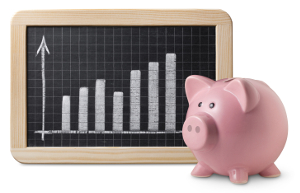In addition to the New York Stock Exchange, there is also the American Stock Exchange (AMEX) and NASDAQ. In the past, the NASDAQ was for smaller companies that were just getting started, and it was prestigious for them to move up to the NYSE or AMEX. These smaller companies included a few you might have heard of, like Apple Computer (AAPL),Intel (INTC), and Microsoft (MSFT). In the past decade, with the success of the NASDAQ and the linking of these exchanges via computers, companies don’t bother switching from one exchange to the other like they use to.
When you place an order with your stock broker, your stock broker sends your request to one of the Stock ExchangeStock exchanges are simply organizations that allow people the ability to buy and sell stocks. to see what the best price is. The price that buyers are willing to pay is called the “Bid” price and the price that sellers want to sell for is called the “Ask” price.
If you are willing to accept the current prices being quoted, your broker will send your order as a “market” order meaning you will get filled at the best price available when your order hits the exchange. If you are buying stock, you will get filled at the price the sellers are “asking”, and if you are selling, you will get filled at the price that buyers are “bidding.” The system is very efficient, and the difference between the bid and the ask priceThe price that sellers want to sell for is called the “Ask” price., known as the bid/ask spread, is usually only a few cents.
Seeing the Bid/Ask prices in the North American exchanges are not free – you generally have to pay to see them. That is one way that the exchanges make money.
Even with this growth of computers, the stock exchanges themselves still function much as they have for many years. Should you watch some video or visit a stock exchange, you will still see a morass of apparent chaos, with people running around with handfuls of small pieces of paper containing purchase and sales orders. If you witnessed this chaotic activity at almost any other business, you’d naturally assume bankruptcy, a tornado, or a tsunami was at the front door.
Yet talk to any trader on the floor of an exchange and they’ll tell you it all works well. While it appears to be total, unbridled chaos, the system has worked for many years and continues to be effective today.
Most stock exchanges are actually incorrectly named. Their former identity, securities exchanges, is more correct. Along with equity securities (stocks), stock exchanges also typically facilitate trading of options, bonds, pooled investment products (e.g., mutual funds), investment trusts, commodity futures and some of the other financial products defined in Lesson 1.
